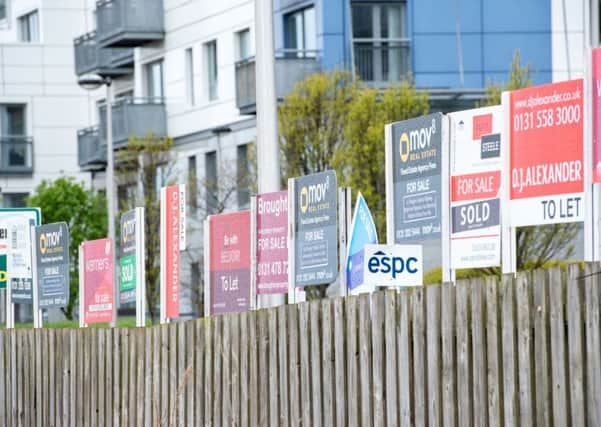Callum Chomczuk: Broken property market is failing a generation


Home ownership is increasingly out of reach, with young people expected to save large deposits in order to access mortgage finance. The average house price in Edinburgh topped £261,000 last month and first-time buyers at the lower end of the market can expect to pay an average of £142,000 for a one-bedroom flat.
Analysis of popular letting platform Airbnb shows that of the 9,638 homes listed in Edinburgh in September last year, 57 per cent were available as entire homes, not just spare rooms being let out.
Advertisement
Hide AdAdvertisement
Hide AdThis conversion of residential homes into holiday lets can be detrimental to communities, push prices up and reduce the options available for people who want to live and work in the city. Short-term lets are also a real issue in rural areas where holiday homes are increasingly pushing locals out.
And there is an increasing gap between homeownership rates for different groups in society. Of those who own their home outright or have a mortgage, only two per cent are lone parents and five per cent are large families, while 21 per cent are couples with no dependent children and 18 per cent are of pension age.
And the problem is not just about access to homeownership – there is an increasing challenge for those wishing to live in parts of the private rented sector. For example, in Edinburgh the proportion of young households (aged 16 to 34) living in the private rented sector has grown steadily from 31 per cent in 1999/2000 to 59 per cent in 2016.
The average cost of renting privately in Edinburgh has now reached £740 a month for a one-bedroom home or £956 for two bedrooms. While across the country, social and private-let tenants are spending around 25 per cent of their income on rent.
The rising cost of housing in the private rented sector and cuts to benefits for private renters means that many are struggling to afford the essentials and risk eviction if they can’t keep up with rental payments. Last year, 637 16 to 24-year-olds presented as homeless in Edinburgh and across the country this number was just short of 7,000.
Part of the problem is the lack of housing supply, and for decades we have failed to build enough new and affordable homes to meet the needs of young people.
This is being partly addressed through the current Scottish Government capital programme, supporting the delivery of 50,000 affordable homes during this Parliament.
However, it takes time to undo years of under capacity, and as such, the gap between the ‘haves’ and ‘have nots’ is getting bigger all the time.
Advertisement
Hide AdAdvertisement
Hide AdFor many young people, a home of their own is a distant dream – and, in the meantime, the market is failing Scotland’s young people.
We need politicians today to meet the housing aspiration of these young people – whatever their circumstance and wherever they live.
This could mean a secure tenancy for a singe person who has just got their first job, an affordable mid-market-rent flat in a city for a young professional who is beginning their career, or a young couple looking to buy their own home. We need to make housing more affordable and that means building more homes of all tenures for ownership, shared ownership, private let, mid-market rent and social rent.
The Chartered Institute of Housing Scotland wants to see all parties commit to ending the housing crisis within a generation.
As a start, this means matching the current capital programme of 50,000 affordable homes in the next Parliament.
If the current investment was maintained, it would deliver another 5,000 affordable homes from 2021 for Edinburgh alone.
Of course, there remain a number of structural and cultural barriers that are exacerbating this crisis that must be addressed.
The cost of housing land across the UK has increased from £1 trillion in 1995 to £5 trillion today. We need to move to a model that puts downward pressure on prices and creates an incentive for building affordable housing; encouragingly, it may be that the current debate over land value capture taking place in the Scottish Parliament could be the catalyst for long overdue reform.
Advertisement
Hide AdAdvertisement
Hide AdHowever, we also need to make people more aware of the housing options that exist. Many people want to own their home and it is right that this aspiration is supported.
But people require different homes at different ages and stages of their life and, as such, we as country need to rethink our attitude to social housing and more persuasively make the case about why social renting can be for anyone, regardless of their income.
So we need to address the underlying costs of housing, match this with meaningful supply and simultaneously make to the case for why social housing can play a legitimate part of everyone’s housing journey.
This is no small feat, but if decision-makers respond effectively, they may be remembered as the generation that met the challenge of Scotland’s housing crisis.
• Callum Chomczuk is deputy director at CIH Scotland
